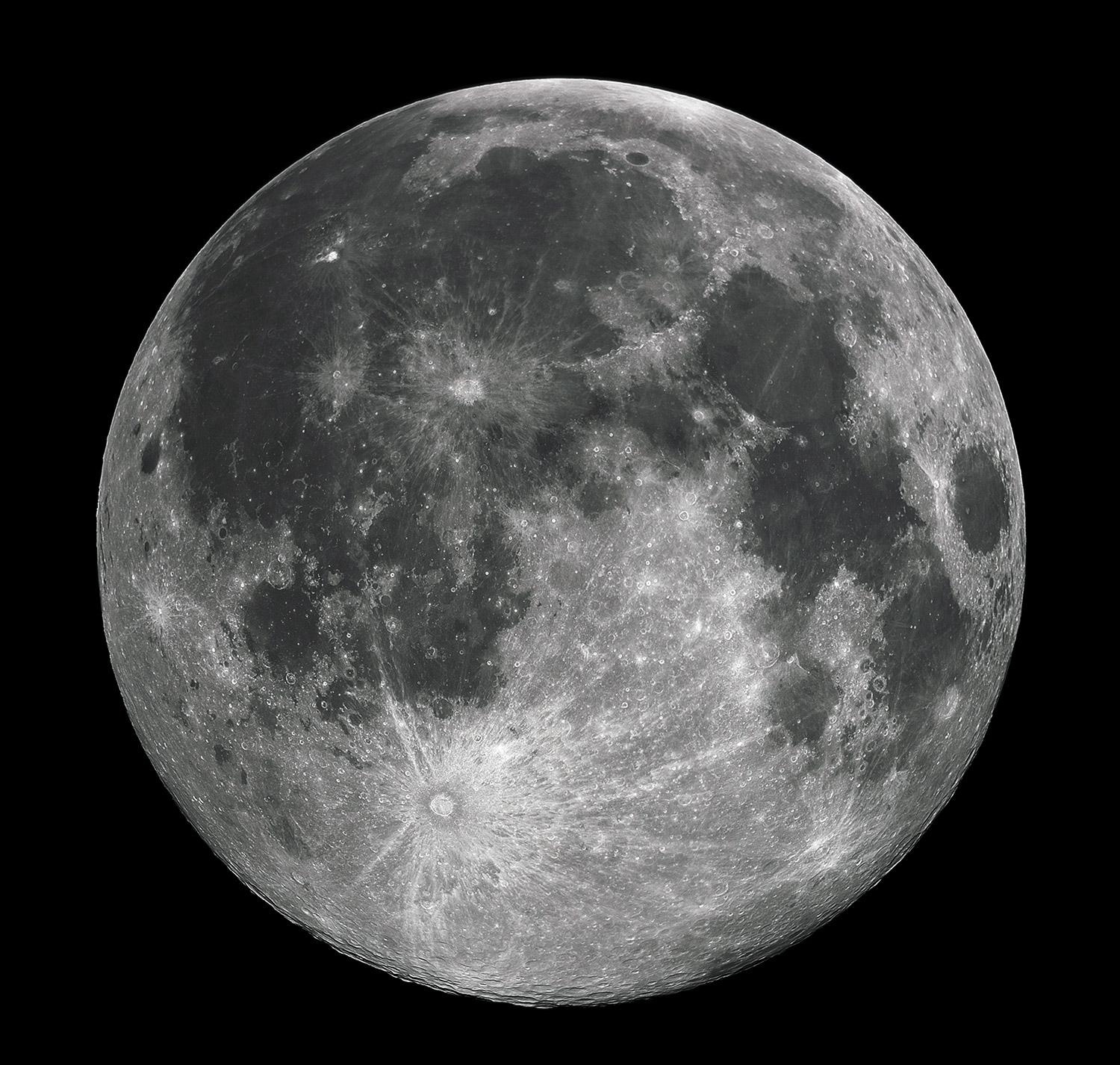It’s space water, but not as we know it
Exploring laser-induced fluorescence of water and aqueous minerals for space applications
Scientists have opportunities for students to work on an environmental luminescence project that aims to help us understand and exploit water as it appears on the Moon.

Full moon. Image: Gregory H. Revera, CC BY-SA 3.0
The recent discovery of water on the Moon using radar mapping has brought a new wave of excitement and hope about long-term human habitation as water can provide both oxygen for breathing as well as fuel for further exploration.
A number of ideas have been put forward from the international community to liberate that water on the surface of the Moon, mostly by concentrating sunlight to evaporate it from its current form. This idea critically hinges on the fact that lunar water is in a relatively loosely bound form within the surface rocks and dust, but there is currently no way of determining this with existing techniques. Should the water be trapped inside harder minerals, the process of extraction will be significantly more complicated and difficult.
Passively identifying water on Earth has been done extensively, with absorption measurements mostly being used. Determining though not just the presence or absence of water but also the form in which it is found and bound on the surface of the Moon requires a complete rethink of those techniques.
A possible solution is to use active sensing of water based on laser-induced fluorescence. There are very few examples of recorded light emission from pure water, but water in any environment is never pure. Water contains a complex mixture of parts of its surrounding environment, and those parts diluted in water can have distinct active optical signatures that can be used to detect and identify water itself.
We propose to explore a large part of the optical spectrum, including previously poorly explored parts of the infrared, to record, analyse and catalogue light emission from water in different forms, from different environments, and at different temperatures. While lunar water samples are unlikely to come by, water that has permeated through minerals similar to those on the lunar surface can be prepared and its properties characterised.
This project, based at the Institute for Photonics and Advanced Sensing (IPAS) at the University of Adelaide and the South Australian Museum, aims to utilise the cutting-edge laser and optics facility at the Prescott Environmental Luminescence Laboratory (PELL) to generate laser-induced fluorescence from cultures of bacteria that threaten the integrity of animal remains at the Naracoorte cave system, and both image it using near-infrared (NIR) cameras and analyse it through cooled infrared spectrometers. The PELL has a collection of laser sources that can span the optical spectrum, from deep ultraviolet to mid-infrared, and a wide array of detectors and cameras that comprise a facility unique across research institutes globally
A successful candidate would be someone with experience in either environmental sciences or optics/physics. The combined expertise of the support team will ensure we bring you up to the level of expertise required to successfully complete the project. You will be working with members of this team and have support provided by IPAS and the PELL.
This work aims to create a technique that would help us understand and exploit water as it appears on the Moon. Join us!
Join the Institute for Photonics and Advanced Sensing
This project is hosted by IPAS, a global hub of photonics research, creating transformational new approaches to sensing and transdisciplinary problem solvers.

Supervisors
Co-supervisors: Professor Nigel Spooner
Research area:
Environmental sensing - Prescott Environmental Luminescence Laboratory, IPAS
Recommended honours enrolment:
Honours in Physics or Honours in Environmental Geoscience
